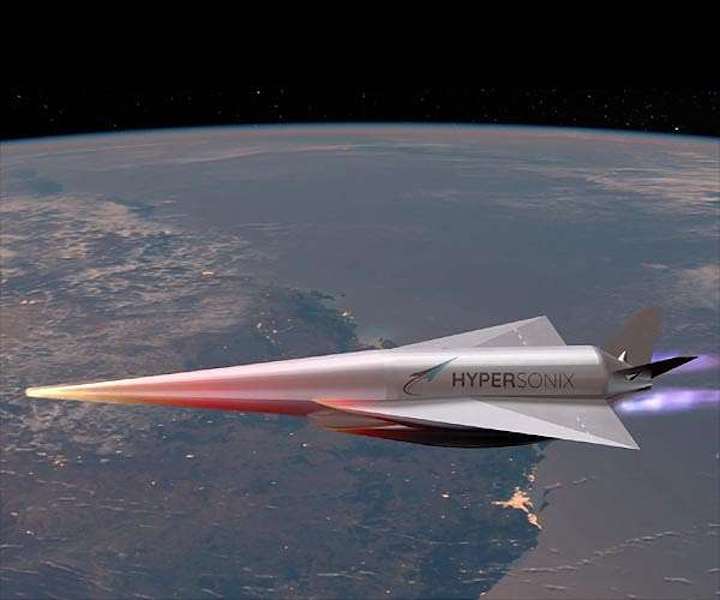15.01.2022

Hypersonix's SPARTAN is capable of accelerating from Mach 5 to Mach 12; or five to twelve times the speed of sound. The Delta-Velos vehicle that features the SPARTAN engine will fly over 2500 km without emitting CO2 or other noxious gases before landing like a conventional aircraft on a runway and in a condition to do it all again.
-
On the ground, sound waves travel at around 340 metres per second. An aircraft is Supersonic when it exceeds the speed of sound. Hypersonic speed is more than five times the speed of sound - or 'Mach 5' - which is just over 6,000 kilometres per hour.
At Mach 5 and above, friction caused by molecules flowing over the hypersonic aircraft can generate temperatures in excess of 2000 Celsius. Suffice to say that Brisbane-based aerospace engineering start-up, Hypersonix Launch Systems, is choosing its materials to cope with these extremes.
Founded in 2019, Hypersonix Launch Systems aims to provide sustainable satellite launch services from Australia using hypersonic scramjet technology. In a short time, and in the shadow of the pandemic, the Hypersonix team of close to 20 aerospace engineers and material specialists has developed reusable scramjet engine technology for engines that are powered by sustainable green hydrogen fuel.
Dr. Michael Smart, Co-Founder, Chief Technology Officer and Head of Research and Development with Hypersonix is a recognised world leader in scramjet technology having worked as Research Scientist at the NASA Langley Research Center (Scramjet Branch) before returning home to Brisbane. His alma mater is the Centre of Hypersonics at the University of Queensland which is recognised globally as one of the leading university-based research groups in the field of Hypersonics.
Dr Smart maintains that as access to space becomes cheaper and more frequent, space junk and rocket emissions from chemical propulsion are increasingly polluting the stratosphere. Developing multi-mission spacecraft powered by green hydrogen which is generated in an environmentally sustainable process using solar power to extract hydrogen from water is a prudent solution.
"Scramjet engines are a type of jet engine, and rely on the combustion of fuel and oxygen from the air to produce thrust. We've developed our green hydrogenpowered SPARTAN scramjet engine using Ceramic Matrix Composites (CMC) to withstand the high temperatures experienced by space vehicles during the journey through space and particularly during the controlled re-entry phase. The high-temperature load lasts only around 20 minutes per flight, and for reusability, at least 30 cycles would be sufficient. CMCs have a high strength-to-weight ratio even at high temperature, high thermal shock resistance and toughness. Carbon fibre reinforced Silicon Carbide(C/ SiC) can be used up to 1500C.,' advised Dr Smart.
Hypersonix's SPARTAN is capable of accelerating from Mach 5 to Mach 12; or five to twelve times the speed of sound. The Delta-Velos vehicle that features the SPARTAN engine will fly over 2500 km without emitting CO2 or other noxious gases before landing like a conventional aircraft on a runway and in a condition to do it all again.
Dr. Smart maintains that Hypersonix has no ambition to become vertically integrated: 'Our core knowledge is scram jet engines and how to develop sustainable hypersonic aircraft. We are actively seeking research and development as well as for durability and high temperature resistance for multi-use launch vehicles and engines and their components."
The company has recently developed collaborative partnerships with the University of Southern Queensland, Boeing Australia, Siemens (for multiphysics computational fluid dynamics software) and the industrial gas company - BOC Ltd.
Quelle: SD
